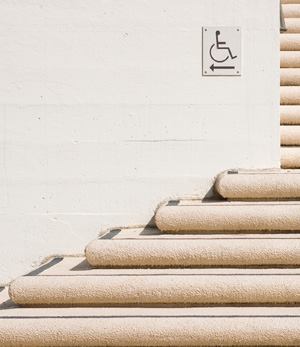It’s important to note that potential complaints may also come from outside of the resident community, via reports from field testers. These individuals are frequently hired by organizations funded with HUD grant money to investigate fair housing violations. The use of testers is actually a common approach to enforcement.
4 What do the courts say about accessible housing? The courts have recently made some significant rulings relative to the two-year statute of limitations in design and construction cases. The industry asserts that the Fair Housing Act clearly identifies the two-year statute of limitations as commencing when the building is completed. To interpret the law any more broadly would defeat the purpose of the statute of limitations and place builders on the hook for eternity.
Unfortunately, this issue continues to be tested. The 6th U.S. Circuit Court of Appeals has ruled that the statute of limitations is delayed until the last unit is sold or leased, based on the “continuing violation” theory, whereby the actions are treated as a continuing series of discriminatory behaviors. More recently, however, the 9th U.S. Circuit Court of Appeals ruled that the two-year statute of limitations begins when the last certificate of occupancy is issued, not when an alleged violation is encountered.
Even so, this favorable ruling applies only to the nine Western states covered by that court, which includes California, Arizona, and Oregon. Apartment owners should also note that there is no statute of limitations for the DoJ’s enforcement ability if a defendant has engaged in a “pattern or practice” of fair housing violations.
5 What can I do to ensure compliance? Do not rely on design documents and approved building permits alone. It is also essential that the people you count on to “build it right” have the proper expertise in fair housing compliance. Today, building professionals with real expertise in accessible design can be a scarce commodity.
Failure to understand the ambiguities of the law is also no defense. The reality is that the focus on rights for people with disabilities in this country is going to remain a priority among federal agencies and nonprofit advocacy groups alike. In the spirit of the 40th anniversary of the Fair Housing Act, apartment owners and managers should educate themselves and their employees about their ongoing obligation to build and deliver accessible housing to persons with disabilities. [See “Resource Ready” at left for a list of informative sites.] It’s more than a way to reduce the likelihood of costly litigation. In addition to making good business sense, it is the right thing to do.
Jeanne McGlynn Delgado is vice president of business and risk management policy for the National Multi Housing Council in Washington, D.C.
Resource Ready These five sites will make you an accessible housing expert.
HUD’s Office of Fair Housing and Equal Opportunity (www.hud.gov/offices/fheo) Includes links to vital legislation such as the Fair Housing Act, the Civil Rights Act of 1964, the Americans With Disabilities Act, Section 504 of the Rehabilitation Act of 1973, the Architectural Barriers Act of 1968, and more
Fair Housing Accessibility FIRST (www.fairhousingfirst.org) Provides training and technical guidance to architects, builders, developers, and others on the design and construction requirements of accessible housing
U.S. Access Board (www.access-board.gov) A federal agency committed to accessible design that offers the full text of the ADA Accessibility Guidelines (ADAAG) for buildings and facilities
HUD USER Research Information Service (www.huduser.org) Contains more than 1,000 publications, including “Discrimination Against Persons with Disabilities: Guidance for Practitioners,” a 2005 report that gives guidance on how to conduct disability discrimination testing
National Multi Housing Council Accessibility Center (www.nmhc.org/goto/Accessibility) Includes additional research and articles as well as information on proposed regulatory or legislative measures related to accessible housing
